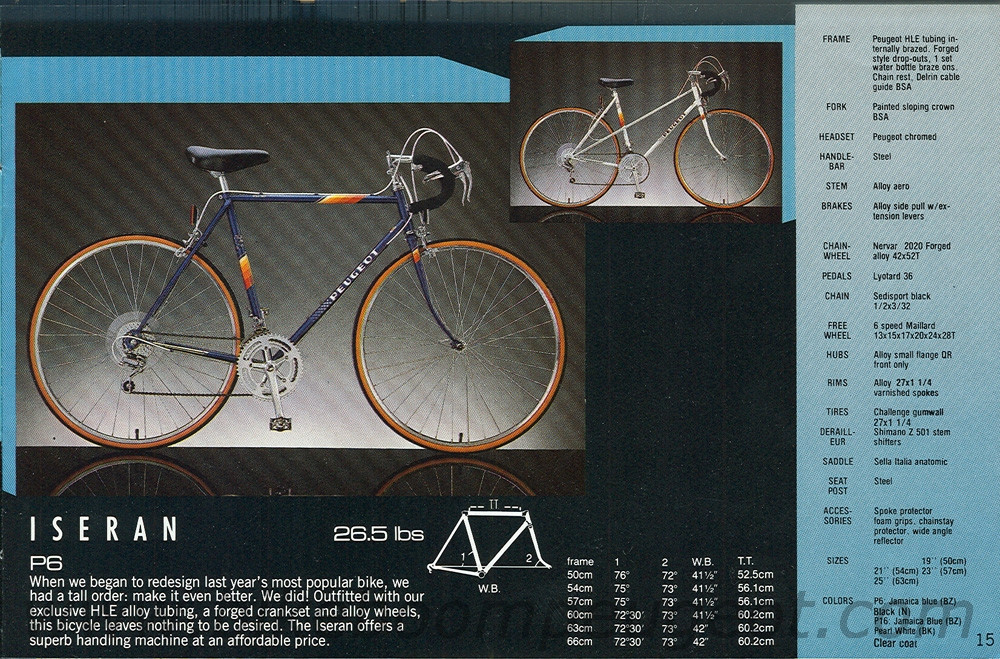This looks awfully close to your bike, the 1987 Iseran, USA model:

I'm pretty sure the yellow-orange-red "rainbow" markings put your bike in the 1986-1987 time frame. The Iseran does have Shimano shifters spec'd, but the derailleur isn't specified in that link.
Your seat post also looks different from the seat post shown in the brochure image, but it looks a lot like the seat post in my 1987 Tourmalet.
The center-pull brakes don't seem to be original, though. I don't think I've seen a Peugeot spec'd with those, but who knows.
Also, your paint scheme seems a bit more complex, with faded-in white around the "rainbows" and the Peugeot on the downtube. I'll just note that my 1987 Tourmalet's paint job doesn't match the paint job on the 1987 Tourmalet in the brochure, but it does match the mixte-framed Iseran shown and the 1987 Ventoux's paint, so perhaps Peugeot wasn't too strict in following their own brochure when painting frames and assembling bicycles from parts.
Here's the link of Peugeot's full 1987 catalog: https://www.bikeboompeugeot.com/Brochures%20USA/Peugeot%201987%20USA%20Brochure/Peugeot%201987%20USA%20Brochure.htm
Note that there are links for catalogs from other countries, and I've noted in the past that the same-named bikes in the catalogs for different countries often do differ somewhat in paint scheme and components.








